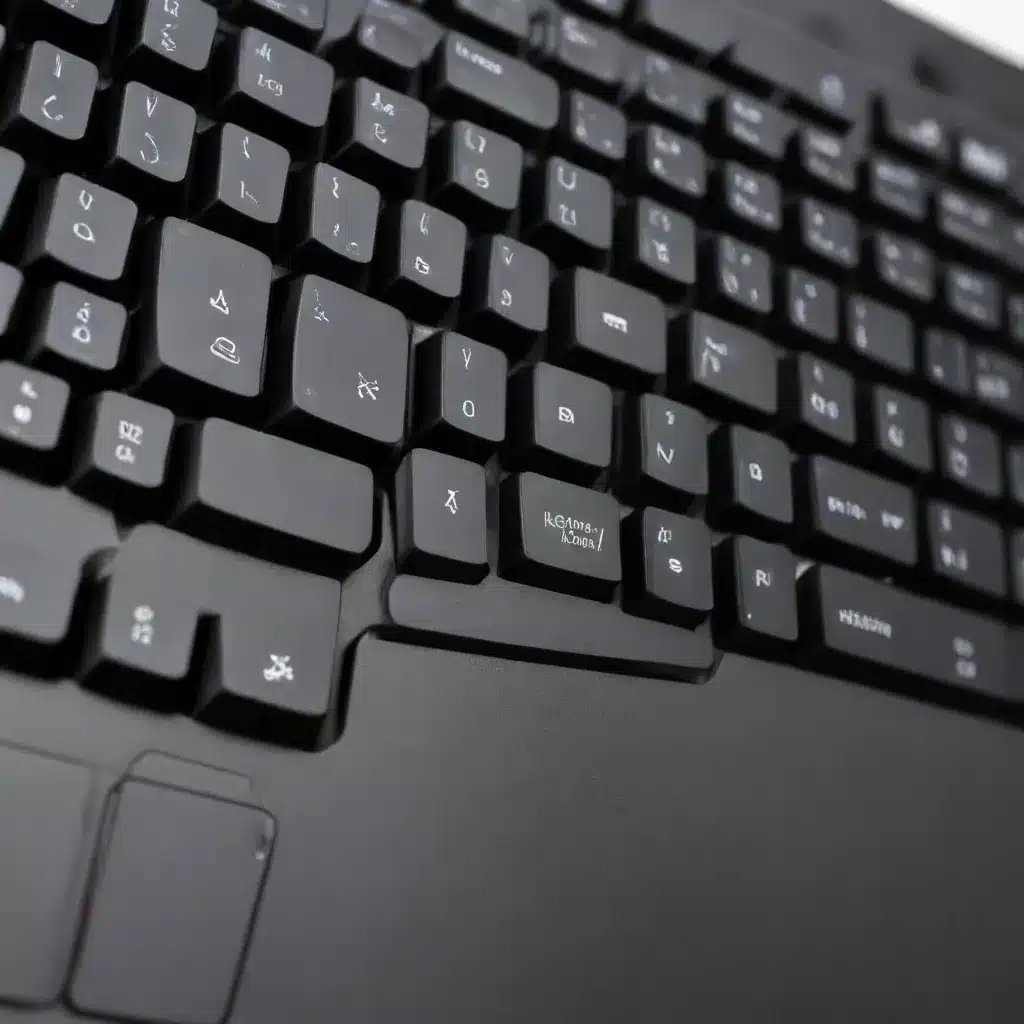
Understanding the Importance of Keyboard Ergonomics
As an experienced IT professional, I’ve encountered countless cases where users struggle with discomfort or pain during prolonged typing sessions. The keyboard, often overlooked as a simple input device, plays a crucial role in maintaining a healthy and productive computing experience. In this comprehensive article, we’ll explore the various keyboard replacement options available, focusing on how you can restore a comfortable and efficient typing experience.
The Impact of Poor Keyboard Ergonomics
Conventional keyboard designs, with their fixed layout and limited adjustability, can often lead to strain on the wrists, fingers, and overall posture. The natural resting position of our hands and arms is not always aligned with the positioning required by standard keyboards. This mismatch can result in repetitive strain injuries (RSI), such as carpal tunnel syndrome, that can significantly impact productivity and long-term well-being.
Addressing Wrist and Hand Discomfort
One of the primary concerns with traditional keyboards is the strain placed on the wrists and hands. The standard keyboard layout forces users to rotate their wrists and maintain an uncomfortable, angled position for extended periods. This can lead to pain, numbness, and a reduction in dexterity, ultimately hindering the typing experience.
Exploring Keyboard Replacement Options
To alleviate these ergonomic challenges, various keyboard replacement options have emerged, each offering unique features and benefits. Let’s dive into some of the most popular and effective solutions:
Ergonomic Keyboards
Ergonomic keyboards are designed to provide a more natural and comfortable typing experience. These keyboards often feature a split or curved design, allowing the user’s hands to be positioned in a more relaxed, shoulder-width alignment. This reduces wrist rotation and promotes a more neutral hand and arm posture.
One notable example is the Ergodox EZ, a split, customizable keyboard that enables users to tailor the layout and key positioning to their individual needs. By adopting an ergonomic keyboard like the Ergodox EZ, users can experience a significant reduction in wrist and hand discomfort, as mentioned in the article on relearning typing habits.
Mechanical Keyboards
Mechanical keyboards, known for their distinct tactile feedback and satisfying typing experience, have gained popularity among enthusiasts and professionals alike. These keyboards often feature individual mechanical switches under each key, providing a more responsive and customizable feel compared to traditional membrane keyboards.
While mechanical keyboards may not directly address ergonomic concerns, they can still contribute to a more comfortable typing experience. The improved key travel and tactile feedback can reduce the strain on the fingers and hands, potentially alleviating some discomfort associated with prolonged typing sessions.
Vertical Keyboards
Vertical keyboards, also known as “ergonomic split keyboards,” take the ergonomic concept a step further. These keyboards are designed to position the hands in a more natural, vertical orientation, reducing wrist rotation and promoting a more relaxed arm and hand posture.
The Microsoft Designer Compact Keyboard, as mentioned in the Microsoft support article, is an example of a vertical keyboard that offers a comfortable typing experience with its low-profile design and Bluetooth connectivity.
Customizable Keyboard Layouts
In addition to the physical design of the keyboard, the layout of the keys can also play a significant role in the typing experience. Exploring alternative keyboard layouts, such as Colemak or Dvorak, can help users optimize their typing efficiency and reduce strain on the hands and fingers.
As discussed in the article on relearning typing habits, the author’s experience with the Colemak layout and the Ergodox EZ keyboard showcases the benefits of customizing the keyboard layout to better suit individual needs and typing patterns.
Addressing the Stigma Around Membrane Keyboards
While mechanical keyboards have gained widespread popularity, there is often a stigma surrounding membrane keyboards, as highlighted in the Reddit discussion. However, it’s important to recognize that personal preferences and typing styles can vary greatly, and what works for one individual may not work for another.
If you find that you genuinely prefer the feel and responsiveness of a membrane keyboard, such as the Razer Cynosa mentioned in the Reddit post, there’s no need to feel pressured to conform to the mechanical keyboard trend. The key is to find a keyboard that allows you to type comfortably and efficiently, regardless of the underlying technology.
Customizing Your Keyboard for Maximum Comfort
Regardless of the keyboard type you choose, customization and personalization can play a crucial role in optimizing your typing experience. Features like programmable hotkeys, adjustable tilt and height, and the ability to remap keys can all contribute to a more comfortable and efficient workflow.
As highlighted in the article on relearning typing habits, the author’s experience with the Ergodox EZ’s customization options, such as the “tap vs. hold” functionality for modifier keys, demonstrates the benefits of a tailored keyboard setup.
Conclusion: Restoring a Comfortable Typing Experience
In the ever-evolving world of technology, the keyboard remains a fundamental input device that can significantly impact our overall computing experience. By exploring the various keyboard replacement options available, IT professionals and users alike can find solutions that address the ergonomic challenges of traditional keyboards and restore a comfortable, productive, and pain-free typing experience.
Whether you choose an ergonomic, mechanical, or customizable keyboard, the key is to prioritize your individual needs and preferences. By investing in a keyboard that aligns with your typing habits and physical requirements, you can enhance your productivity, reduce the risk of RSI, and enjoy a more comfortable computing experience for years to come.
For more information and personalized IT solutions, visit ITFix.org.uk.












